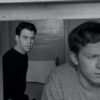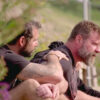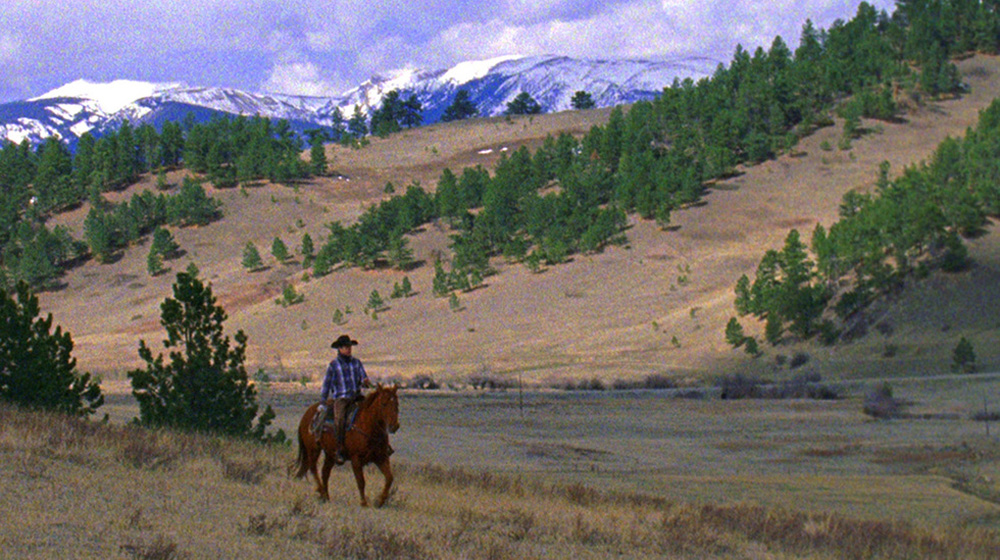When Tylee Abbott was 10, his parents bought a 2000-acre cattle ranch in Montana where he would soon be spending the summers, tending to the births of calves and fully absorbing the majesty of the land. No doubt the experience at Fishtail Basin Ranch, where he still travels with his brother Brian come daylight savings time, was what inspired him to become a Western American Art Specialist for international arts organizations, but it also led to his first collaboration with his friend Andrew Renzi, a filmmaker who grew up with Abbott in Philadelphia and has since gone onto produce Alistair Banks Griffin’s meditative family drama “Two Gates of Sleep” and direct shorts leading up to his narrative feature debut “Franny,” due out later this year.
However, for both the filmmakers and metropolitan audiences, “Fishtail” offers the opportunity to take leave of civic life for a spell, venturing down Fiddler Creek Road to inhale the crisp air and observe the sweeping plains of Montana, an experience burnished by all the chemical alchemy provided by shooting on 16mm film stock and the lyrical verbal interludes contributed by Harry Dean Stanton, reciting Walt Whitman at one moment and singing “Home on the Range” at another. Following the Abbott boys during calving season, the film bears witness to the miracle of birth as well as the continuing vitality of a way of life that’s been all but consigned to the past.
While at the Tribeca Film Festival, Abbott and Renzi spoke about how they pulled inspiration from many mediums for the film, using farm equipment to help make it, and the collision of bringing country life to the big city.

Andrew Renzi: Absolutely. Obviously, that was really the starting place — the learning curve of what Tylee does and the painters of the American west that were creating these mythic and legendary compositions of trappers and the cowboys and the landscapes [such as] the Frederic Remingtons, the Thomas Morans, the William Ranneys.
One of the great things about those [paintings] is when you think about it, the colors could have been super-muted, but there’s this wonderful saturation to a lot of those paintings that makes the American West feel a little bit heightened. That also fits into some of the film references [of “Fishtail”] too, like “Jeremiah Johnson” and “Once Upon A Time in the West.” It was really a blending of the art and those films for me that created this style.
Tylee Abbott: The Western art is a tradition of essentially rendering the culture of the American West with reverence. It essentially establishes an aesthetic dictated by the land and the culture that comes down through Western paintings and the earliest Americans going west, an aesthetic that really has traveled into film. A lot of Western painters ended up in LA and in Santa Barbara and have relationships with the earliest black-and-white Western cowboy film directors and stars. That’s come through into modern cinema. We kind of wanted to explore those things and paint a new picture of the modern American cowboy.
Calving season looks like it’s typically a lonely period of time for the cowboys. Was it interesting to have a film crew added to the mix?
Tylee Abbott: It is a lonely period, and the winters are particular tough in Montana for a lot of people. In a way, it is the routine maybe that gets you through the winter and keeps you occupied into the summer, but I think that it’s a particularly good time to capture that way of life in that it’s calm, soothing and introspective. [Andrew has] been out to the ranch before and my younger brother helped us on the movie. It was a small crew [that] spent three or four days following Brian and I around, getting the feel for our routine and how things work. We were shooting on film, so we don’t have the option to just fire away for days and by the time we actually started rolling, it was quite natural to have them around us.
Is it true you actually used farm equipment to help set up shots? You even have a helicopter at your disposal.
Tylee Abbott: We definitely used as many resources as we could with the ranch — things like the four-wheelers, basically using pickup trucks as followers and tractors to stack huge hay bales to get different vantage points. That helicopter probably spent the majority of its flight-dusting cops. That is a part of a way of life here.
It sounds like you had to have a lot of things planned about because of limited resources, but were there were any happy accidents while shooting?
Andrew Renzi: The best happy accident in the whole movie was the birth of the cow. Joe Anderson [the cinematographer] and I tried to control as much of the compositions as possible until we were struck with the moment when we had a cow that was going to give birth. Then we just had to follow the lead of Tylee and Brian and throw everything out the window. We had to bale the hay up and stand on those bales as far away as possible with a really long zoom lens and wait about four-and-a-half hours for this cow to give birth.
For me, it was the most invigorating moment of the whole shoot because it was the only part that I had no control over. It made everything make sense because we went out there at calving season because we wanted to capture a birth, but there was no guarantee that that was going to happen. They give birth frequently, but it’s not guaranteed that you’re going to be able to get it, so just the simple fact that that happened was an absolute happy accident and a moment of affirmation for the project.
Tylee Abbott: For us to find that and observe that was a treat, really. Maybe that’s taken for granted by people watching the movie, but it was a happy accident. We weren’t guaranteed to see a birthing. When you calf on the ranch, you can have 10 calves in one night, and you can never hear a peep. They just pop up, and in the morning, they’re there. As ranchers, we’re there to mostly facilitate [when there are] problems more than anything, and more often than not, these cows do their thing, which is beautiful that they do it on their own and do it as naturally as they do.
Was it a collision of worlds when you get to premiere this film that takes place in Montana in New York?
Tylee Abbott: It’s been rewarding to see different people from different walks of life and backgrounds, particularly my art world and Renzi’s film world friends, each appreciating the movie for what it is and for its individual things, whether that’s a film thing or an art aesthetic thing.
Andrew Renzi: It was just so nice to see this movie on a big screen and to experience it with friends and family members and step off the New York City streets for a moment into a different place. I’ve probably watched the movie 40 million times now, and this was its own experience. We didn’t have huge expectations for this project. It was really just to create something together and try and push the documentary into a different direction. Just to be able to actually show it at all is special.
“Fishtail” does not yet have distribution.




